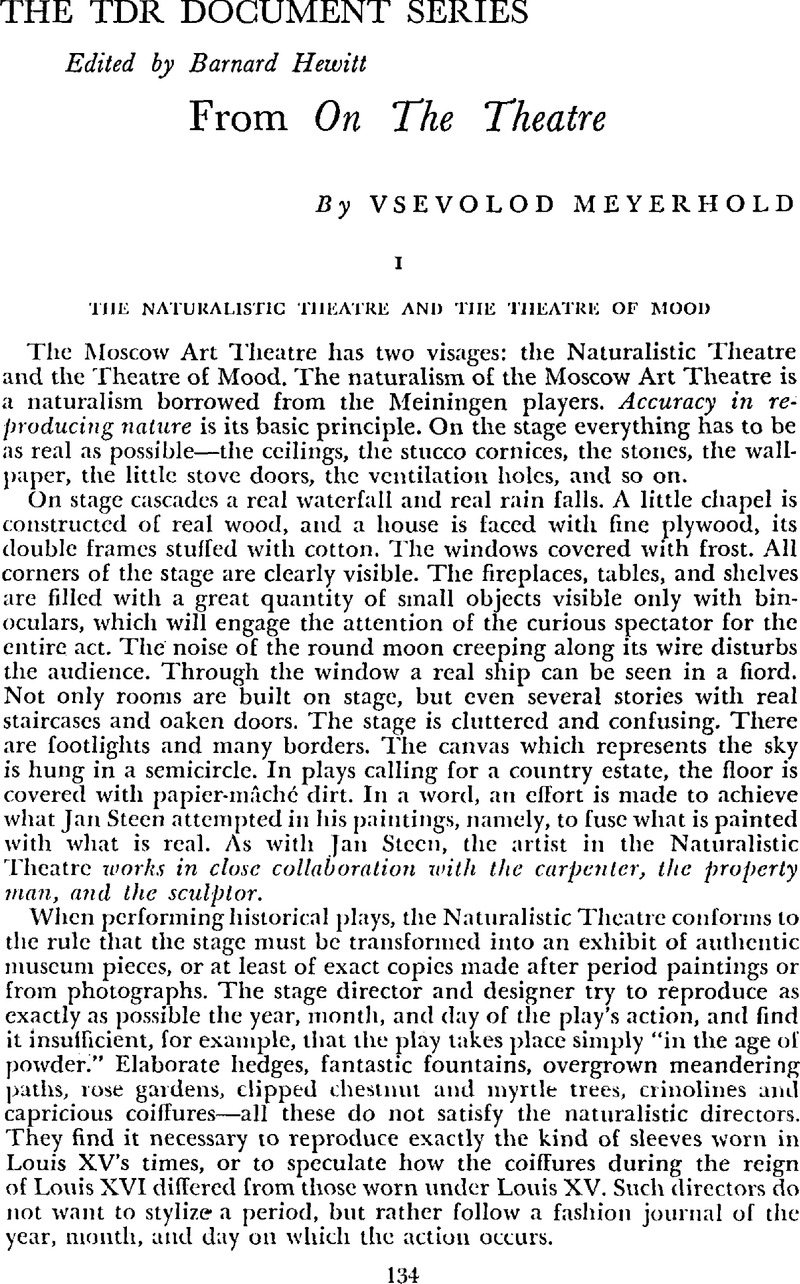Published online by Cambridge University Press: 23 November 2021

1 Schopenhauer.
2 Schopenhauer.
3 Schopenhauer.
4 Leo Tolstoy, “On Shakespeare and on Drama.”
5 Such passing, jarring notes which jut out from the background of the act's leitmotiv can be found in the stationmaster's reading poetry, in the scene of Epikhodov's broken billiard cue, and Trofimov's fall on the stairs. And look how closely Chekhov interweaves the two melodies—the leitmotiv and the accompanying background:
Ania (disturbed): Just now some man in the kitchen said that the cherry orchard was sold today.
Luieov Andreevna: Sold to whom?
Ania: He didn't say to whom, but left. (She dances with Trofimov.)
6 Georg Fuchs, Die Schaubühne der Zukunft, p. 28.
7 Arthur Nikisch, 1855-1922, for many years the conductor of the Gewandhaus orchestra in Leipzig.
8 Alexander Blok (in Pereval, 1907) feared that the actors of such a theatre “might burn the ship of the play,” but I think differences of opinion occur only when free interpretation is permitted. The danger is removed when the director gives good explanations to the actor, and the latter in turn has really understood his director.
9 The “triangular theatre” needs actors without individuality hut with virtuosity. In the “straight theatre” die individual acting talent is very important, and so a new school is needed. A new school is not one in which new techniques are taught, but one which arises only when a new, free theatre is born.
The “straight theatre” grows but once from a school, a single school, just as from each seed grows only one plant. And just as for the next plant a new seed has to be sown, so a new theatre must grow each time from a new school. The “triangular theatre” tolerates many schools, but the task of these schools is to fill vacant positions with a group of candidates who have been trained to imitate the great actors of the established theatres. I am convinced that especially these schools are to be blamed for the lack of real talent on our stages.
10 Annibal Pastore, “Moris Materlink,” Vestn. inostr. literat., Sept., 1903.
11 Richard Muther, 1860-1909, German art historian.
12 Practice raised a question the answer to which I will not take upon myself, but I only want to propose one: should an actor at first expose the inner content of a role, show bursts of temperament, and only then clothe his experience with this or that form? Or vice versa? At first we adhered to this method: not to show temperamental outbursts until we had mastered the form. I think this is right. But you will justly complain that form then enchains temperament. No, this is not so. The old, naturalistic actors, our teachers, said: if you don't want to ruin the role for yourself, begin to read it, not out loud, but to yourself, and only when the part begins to sound in your heart, then speak it aloud. To approach a realistic role by silently reading the text, and a nonrealistic part by first mastering the rhythm of the language and movement—that is the only true method.
13 Vechnaia skazka by Przybyszewski.